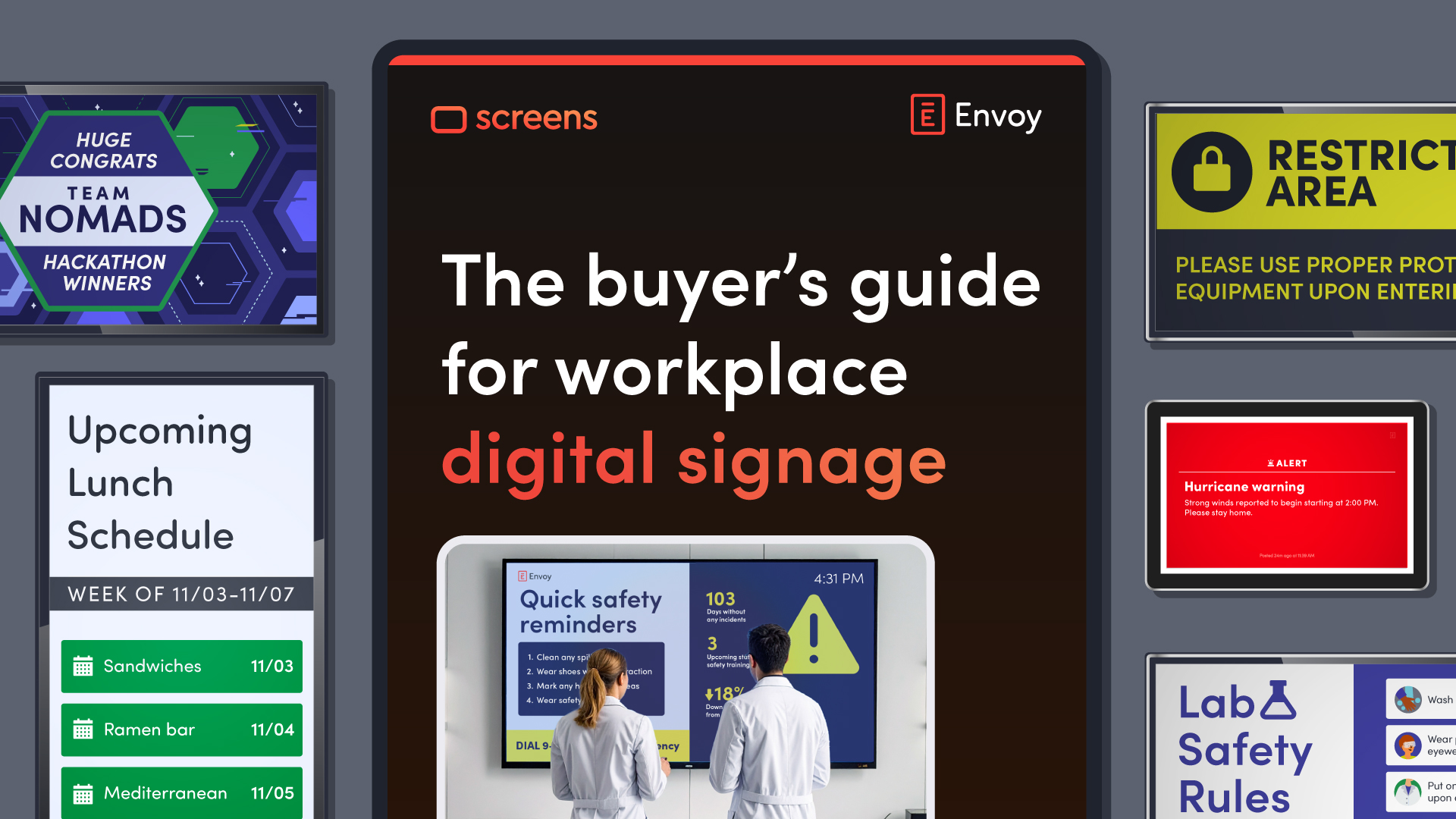Workplace management guides & ebooks
Deep dive into the latest workplace trends, tools, and best practices.
Learn how proactive workplaces anticipate disruption, adapt fast, and stay in control. Discover proven strategies and tools to strengthen workplace safety, compliance, and resilience.
Explore workplace safety challenges and trends in Envoy’s 2025 report. Learn how safety leaders are addressing system gaps, readiness issues, and emerging risks.
Learn how to evaluate, compare, and implement workplace digital signage that strengthens communication, safety, and compliance across every location.
See if your workplace strategy drives efficiency, engagement, and strong performance with this quick, practical checklist from Envoy.
Learn how to reduce compliance risk and enhance workplace safety across multiple sites. Discover automation strategies for ITAR, EAR, OFAC, and C-TPAT requirements that protect employees and streamline operations.
Build a workplace emergency action plan to keep your team prepared. Learn how companies create clear safety action plans for real-world emergencies.
A clear plan isn’t a nice-to-have. It’s a must. Use this checklist to guide your team through every stage of emergency comms—from first alert to follow-up.
Download ITAR, EAR, and C-TPAT audit checklists in one easy bundle. Perfect for workplace, operations, and security teams needing to stay compliant with U.S. trade regulations—whether managing one site or many.
Learn how to build a compliance risk management plan that reduces risk. Get practical guidance for managing regulatory compliance across sites.
Get a workplace emergency evacuation plan and procedures guide to strengthen safety and resilience. Download Envoy’s guide to strengthen workplace safety.











